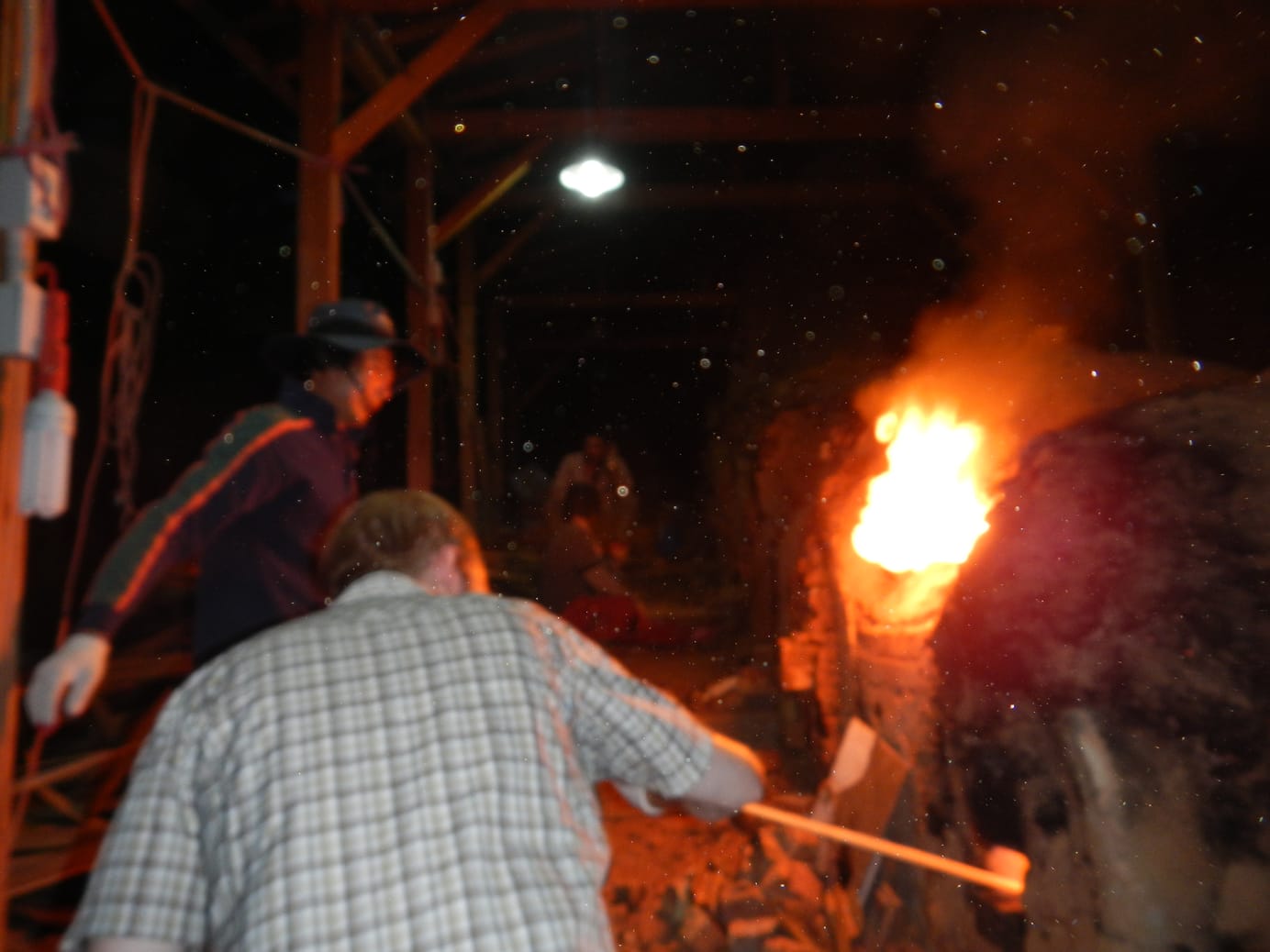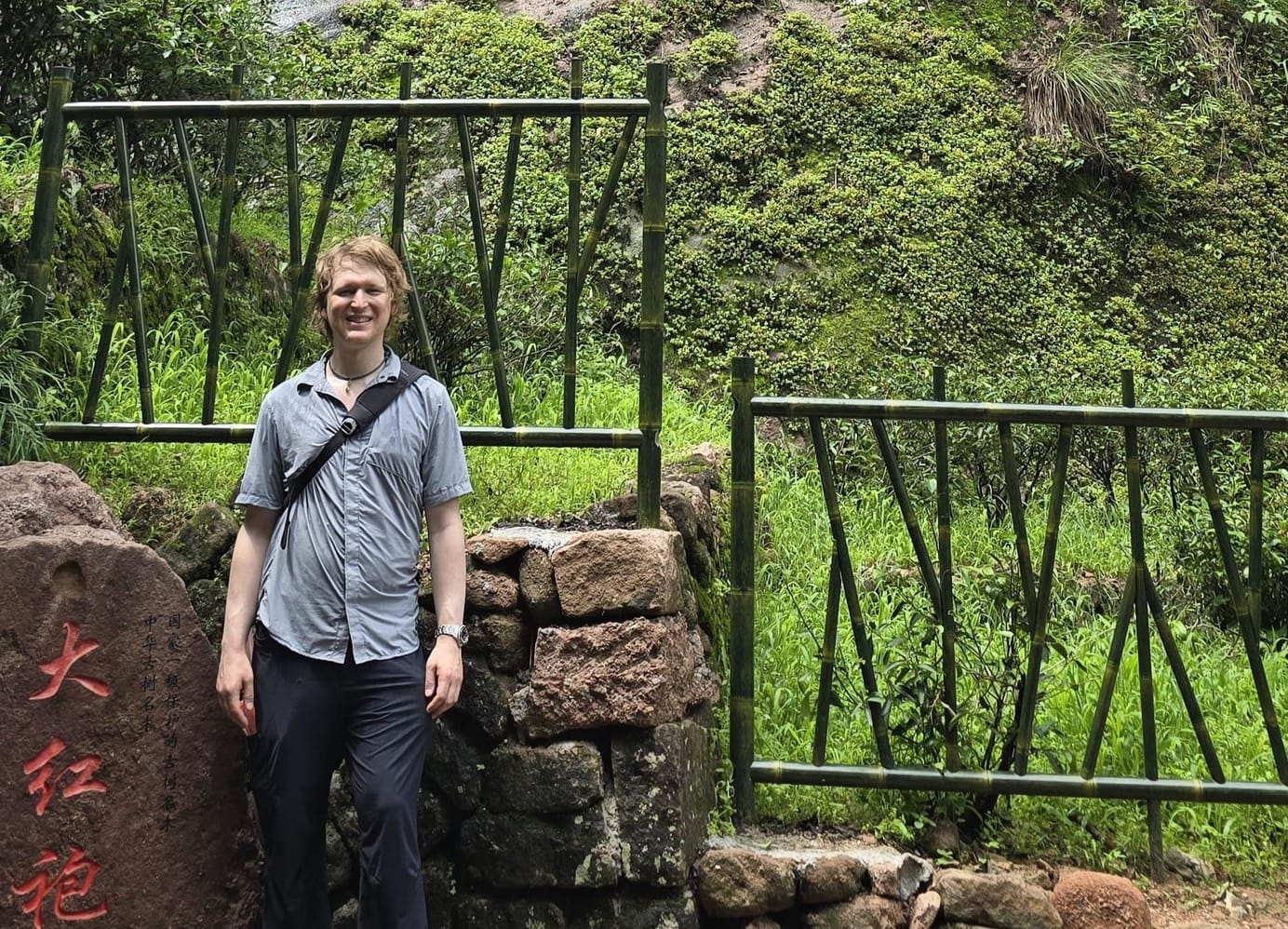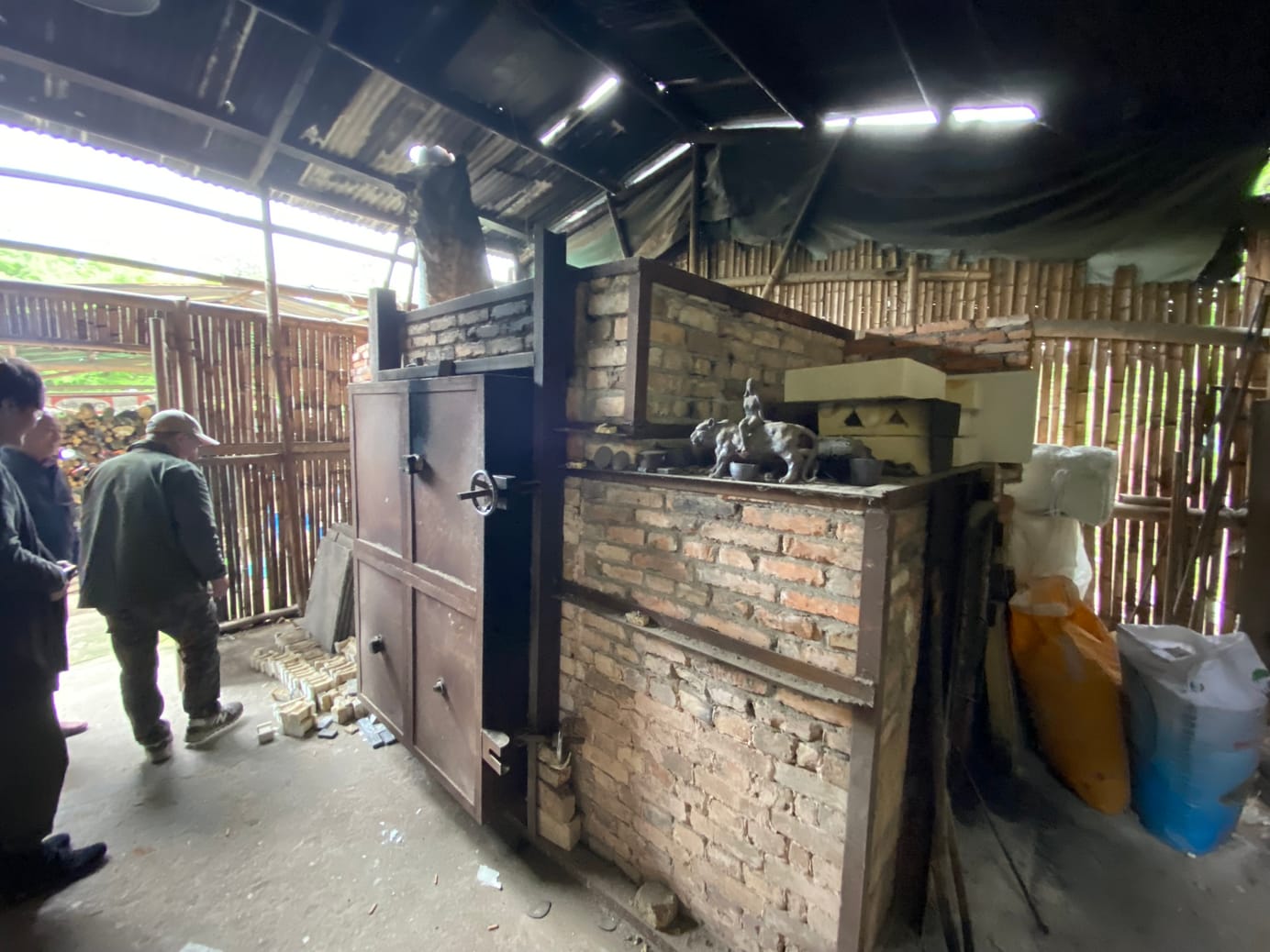
Editorial Conversation: Chapter 10, Section 2: Mature Firing of Zisha Clay
The episode is also available on YouTube and Spotify.
A full transcript is included on the episode page and below:
[00:00:00] Jason Cohen: Hello everyone. I'm Jason Cohen, the author of An Introduction to the Art and Science of Chinese Tea Ceremony. Today we're discussing Book Two, Chapter Ten, Section Two, Mature Firing of Zisha Clay. Here to talk about this chapter is our editorial team, Zongjun Li.
[00:00:20] Zongjun Li: Hello, hello.
[00:00:22] Jason Cohen: And Emily Huang.
[00:00:24] Emily Huang: Hi everyone.
[00:00:26] Jason Cohen: Wonderful. Kiln technology has developed over thousands of years to regularly produce spectacular ceramic wares matching the preferences and desired utility of their patrons. Some of the key developments of kiln technology are the control of firing schedules, kiln atmosphere, and fuel sources in addition to kiln design. Let's focus on firing schedules for today's discussion.
What is a firing schedule?
[00:00:51] Zongjun Li: So it's basically, how you control how long does the ware stay in the kiln? And also, the temperature increase trajectory and the cool down trajectory. So by really control these factors, you will be able to reach a different sintering temperature, different sintering temperature length for different clay types that is required to reach either a artistic effect or performance effect of the wares.
[00:01:21] Jason Cohen: So in summary, it is the time temperature curve of the firing.
[00:01:25] Zongjun Li: That's right.
[00:01:27] Jason Cohen: And why is that so important? The rate of rise for the increase of heat, the sustained max temperature throughout the firing. And then the decline. You can do a crash decline to crash cool a kiln, or you can allow it to very slowly cool down.
What effects do those types of things have in general, not in specific?
[00:01:47] Zongjun Li: In modern days with all these technology, like electric kiln, you can do everything much faster. You can increase the temperature in a very, very sharp rate but stable and sharp rate.
But traditionally, with dragon kiln and other wood fire kiln, it's much harder to control. So if you really not be able to manage the cool down rate correctly, a lot of things will happen to the wares inside. Like, you might increase the crackage rate. You might have higher deformation rate. All of these needs to be taken into account when calculating the firing schedule.
[00:02:24] Jason Cohen: And so, why is the max temperature of a kiln alone not enough to know if a ware is underfired or overfired? How do we have to interpret the firing schedule to understand if a ware has been correctly fired?
[00:02:39] Emily Huang: As Zongjun mentioned, in a traditional dragon kiln or wood fire kilns, it is very hard to control the time temperature curve. And especially when you have multiple different wares located at different spots within the kiln.
So, even when you know the maximum temperature that it may reach to, depending on the clay itself, depending on the shape of the teapot, or even the location that it is put inside the kiln may all have different attributes affecting the end product.
That is why it's not enough to just know the max temperature. It's also very important to know how quickly the temperature rises and how quickly the temperature cools down. As we want it to fire up smoothly, we also want it to cool down smoothly to avoid any crackages or any further unwanted damages.
[00:03:39] Jason Cohen: That's exactly right. So you mentioned the rate of rise, the cool down rate, the sustained temperature, the location in the kiln, which is going to change the amount of heat that it's exposed to even when averaging across the kiln. The other two things that I can think of are open saggers versus closed saggers. Those are going to change the amount of heat that enters.
And so, in summary, the real answer there is that it's all a function of energy. How much energy and how quickly are we putting from the kiln firing into the teapot?
And, Zongjun, you mentioned something interesting about that in dragon kilns had a much slower heat up and cool down.
So how have firing schedules changed over time from the Ming dynasty to today?
[00:04:27] Zongjun Li: With the blessing of modern technology, we can really reduce the time required to fire wares. It used to be days or even sometimes weeks. Now can be shrinked down into hours. But there are a lot of interesting things happening right there.
Like, with the really drastic difference in temperature increase and cool down periods. Wares back in Ming dynasty usually have very different texture than wares nowadays. And not to mention the introduction of double firing in the contemporary era. So it's quite easy for experienced collectors to be able to detect a lot of the differences when you're comparing a older Yixing versus a modern Yixing.
Actually, I have a question for you, Jason. It is thought to be a difference between antique Yixing wares and modern wares because of the difference in firing schedule and kiln usage.
Can you maybe name a few very noticeable difference if our audience want to compare or have the opportunity to compare?
[00:05:27] Jason Cohen: Yeah, I certainly agree with that. I've long theorized that one of the main reasons why antique wares perhaps are a better match for tea or in certain instances have a much higher impact on the flavor of tea is because of firing and because of the textural changes that happen to zisha clay when undergoing a longer firing period.
I've heard many collectors describe the results of zisha wares fired in electric kilns as cold. It's actually the same word that they use when describing oolong tea that's been electric roasted instead of charcoal roasted, they call it cold. It lacks a warmth to it.
And it's a bit of a difficult thing to describe, but it's more of a sense that you get when handling many of these wares. They don't have the depth of texture. They don't have the depth of effect on you that you expect from wood fired antique wares. So I would say the number one thing that always stands out to me is the depth of the texture, if that makes sense. The texture isn't just a surface level texture, that the longer firing, the slower firing, the slower warm up and cool down, all lead to a more thoroughly baked ware.
Maybe it's the difference between searing a steak and sous viding a steak. The texture is very even throughout and you can really feel that and you can see the differences on the inside as well. But I've long been a proponent of the theory that many of the differences that we see are not just because of clay and processing differences, but also the firing technology. Even though it's modernized, even though it's faster, I'm not convinced that it's been a improvement.
[00:07:08] Emily Huang: The steak metaphor was very easy to understand, but I have to say I personally won't be able to tell the difference until I cut it open.
[00:07:18] Zongjun Li: Yep, this Yixing is definitely medium rare.
Underfired, underfired.
[00:07:27] Emily Huang: Take it back to the kitchen!
[00:07:29] Jason Cohen: Speaking of that, people are refiring underfired wares. I've even heard recently of a few collectors that have taken Qing Dynasty antiques that were underfired and weren't such a good match for tea and had them refired. They're, yeah, totally usable.
[00:07:44] Zongjun Li: Jason, have you ever heard of any wares being double fired before the contemporary era? Is this really a modern innovation?
[00:07:54] Jason Cohen: Well, there's wuhui where wuhui, sometimes purposefully or sometimes accidentally, there were refirings when a ware was so obviously underfired. But frequently, because it was still dragon kiln, that resulted in complete vitrification.
So back at the Institute, we had that one totally vitrified, overfired teapot. That felt and looked like glass. So that was an antique. I think that was ROC antique that had been refired. So it's not unheard of, but it wasn't so much a technique as a Hail Mary. This teapot's no good, this teapot's not usable. Let's see if I put it back in the kiln what happens.
[00:08:32] Zongjun Li: Right.
[00:08:32] Jason Cohen: So, not totally unheard of. When F1 developed double firing technique, they were operating off of a long history of Yixing experimentation, but also experimentation in other ceramic forms, because all of the falangcai and wucai, any of the enamel ceramics were double fired at different temperatures. So this idea of doing two full temperature firings was a Yixing innovation, but it wasn't that big of a leap from things that were already being done.
[00:09:03] Zongjun Li: Not a big leap forward, huh?
Wrong week to talk about this.
[00:09:11] Jason Cohen: So, on that topic, most practitioners think of Yixing teapots in a continuum of underfired to overfired, with the desired mature firing somewhere in between. And so the question is, what are the most common attributes of those states.
How do you know if you're dealing with an underfired teapot or overfired teapot? Zongjun, underfired wares can be described as?
[00:09:34] Zongjun Li: The color is usually grayer, it's less vibrant, and the weight is usually significantly lighter. It's more porous, and the surface is usually duller in texture. It's very much like, if any of our audience has touched a Raku ware from Japan. It's a very typical low fired ceramic that when I first touched it, it almost feels like plastic but that's a intentionally low fired ceramic. But in the case of Yixing, low fire is definitely not a desired outcome and frequently in use, it might introduce some earthy notes into the tea which is definitely unwanted.
[00:10:13] Jason Cohen: And Emily, overfired Yixing teapots can be described as?
[00:10:17] Emily Huang: It can be described as glassy, a little bit too smooth in texture, poreless. Yeah, because as we know when the temperature is set to a higher firing temperature, it become more porcelain. Kind of like when you hit on it and the pitch, it's a little bit too high.
[00:10:39] Jason Cohen: Yeah, too dense.
[00:10:40] Emily Huang: Too dense. Yeah, all the attributes that you can imagine when you are facing a porcelain pot.
[00:10:48] Zongjun Li: Pitch are interesting way to detect the firing temperature.
Just a side note that traditionally there is this instrument in China called bianzhong. It's basically you're firing different ceramic flaps in two different temperature, and when you hit them, it will produce different pitch, and then they put it together, and it's a big, hitting piano that you can play during the imperial court.
They're, they're magnificent. There are versions made out of bronze. But they're also versions made out of ceramic or a hybrid.
[00:11:22] Jason Cohen: We discussed the impact of ware placement within the kiln.
Can Yixing teapots of different sizes and materials be fired together just by placing them in different locations? How big of an impact is this and what does this allow us to understand or to do both with ware firings, ware placement, and our understanding of kiln design and kiln technology?
[00:11:43] Zongjun Li: Traditionally, it has been harder because with dragon kiln, it's harder to control the proportion of the flame temperature in different locations very accurately. So the general practice will be putting wares with a high fire requirement closer to the mouth of the kiln, and then you put lower temperature wares closer to the chimney.
In modern days, you have so many different variations of different kilns. Electric kilns, it's basically very uniformic in all aspect inside the kiln. But, with downdraft kiln or with push back kiln, the general practice will be maybe try to put wares with higher temperature requirement on top of the kiln and then you put the low temperature required wares in the bottom.
It's basically follow the color of the flame. Higher temperature is on top of the flame and lower temperature is in the bottom of the flame.
[00:12:37] Jason Cohen: Perhaps one confusing thing about the pushback kiln is that the fire comes from the top, so both heat rises and also the flame ports, the oil ports putting the heat into the kiln, are aligned along the top of the kiln. So the top is hotter for two reasons. Because in most kilns, you push in the fuel and it burns from the bottom up. And so you get a different type of heat flux, a different type of thermal flow. But the heat's pretty concentrated in a pushback kiln.
[00:13:12] Zongjun Li: Is it also the same case for downdraft kiln since the flame is coming from the top, basically?
[00:13:18] Jason Cohen: Well, so downdraft kilns, because they have a chimney, it has a thermal flow.
So the firing is forced to enter from the top and it must flow down and out to the chimney. That creates a vacuum action that continuously pulls heat and oxygen into the kiln. And so usually what happens is that there is one or two eddies, heat vortex eddies, right where the heat being pushed into the top of the kiln where it has to go up before it goes down, creates a chaotic vortex.
And so most of the time in pushback kilns, what you'll actually see is a pyramid stack of wares. But it's only slanted on one side, so it's like a right angle triangle. And that right angle triangle is angled away from that first open heat port, because that's where the heat eddy is.
And anywhere that was there would either be way overfired, or yaobianed, or even saggers would have difficulty in that instance, because it's a lot of energy, heat energy and air movement that would be trying to enter that position.
[00:14:30] Zongjun Li: Interesting. It's almost just like a bented dragon kiln.
[00:14:33] Jason Cohen: Yeah, yeah, like a bent dragon kiln. Exactly. It is possible to fire different wares, different materials in the same kiln. Less so done in small kilns, like electric kilns, not really done in electric kilns. Less so done in more heat even kilns like a downdraft kiln. But on a dragon kiln, they would place it either closer to the chimney or closer to the firebox for wares higher temperatures, towards the middle for wares lower temperatures and that worked as well as anything in the Ming and Qing worked for firing ceramics, and in contemporary period in a pushback kiln even through F1, they were able to fire higher sintering temperature wares on top and lower sintering temperature wares on bottom.
My last question.
Are antique Yixing teapots from the ROC and earlier, are they more likely to be overfired or underfired?
[00:15:28] Zongjun Li: So historically, ceramists, they tend to target the lower limits of the sintering temperature back in the days, because the control of firing temperature at the time was not as good as today. So it's more likely for wares at the time to be underfired. And nowadays when you have extreme control in a electric kiln people tend to target a more accurate sintering temperature whenever they wish it to be. So it's quite interesting to see the difference. And also, one thing that is interesting is the introduction of double firing in the contemporary time when sometimes either the finished fire would be a wood fire for cosmetic reason, or it might be electrified to reach a very accurate sintering temperature at the end.
And one thing that you can achieve with that is a technique called zhengkou (整口). So basically you can have a very tightly sealed cap with the teapot with high control of firing temperature. So in the first firing they would really struggle to pull the teapot with the cap out and then give it a finished polish. And then put it back and then do a second firing so that it will be a very tight seal. Whereas traditionally because ceramist can only hit a rough temperature range to finish the firing, the seal of the cap and the teapot might not be as good.
[00:16:57] Jason Cohen: Well everyone, that's all the time that we have for today Thank you for joining us in this edition of Tea Technique Editorial Conversations. Please join us again for our next conversation, Dragon Kilns.


